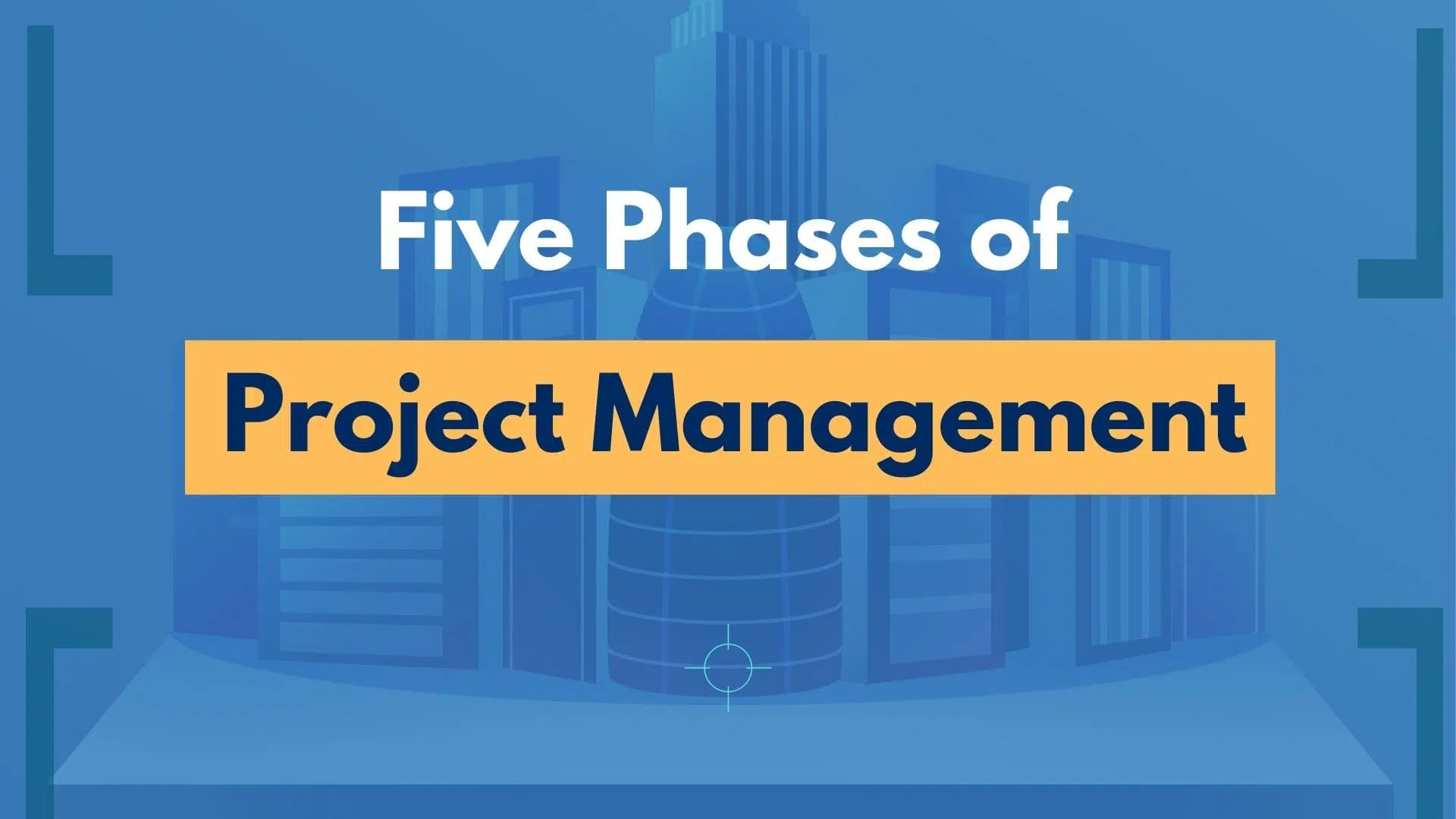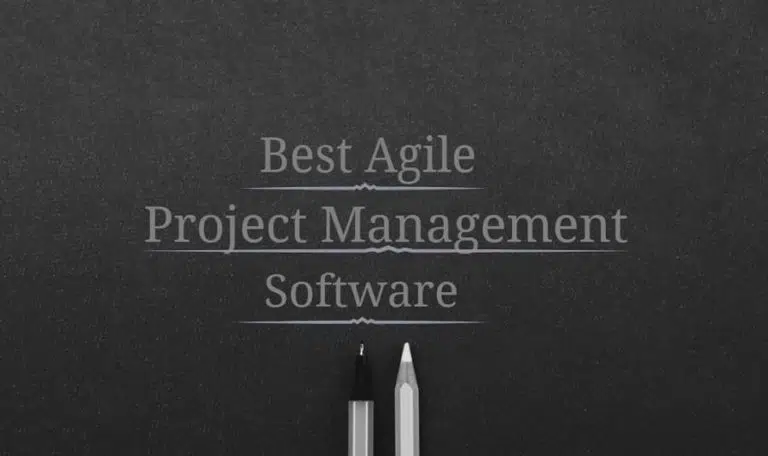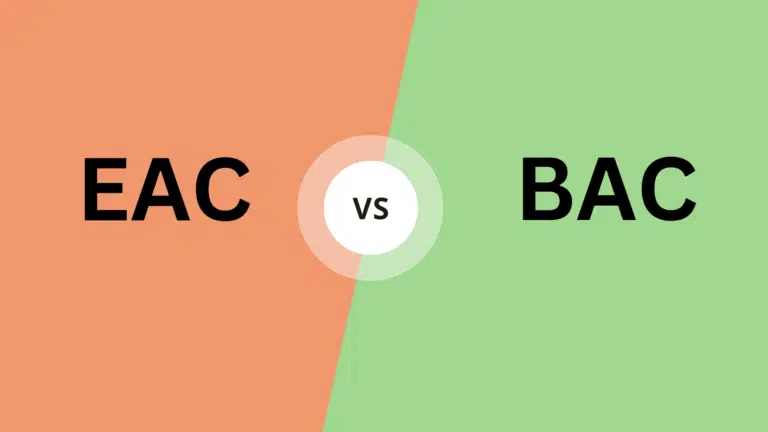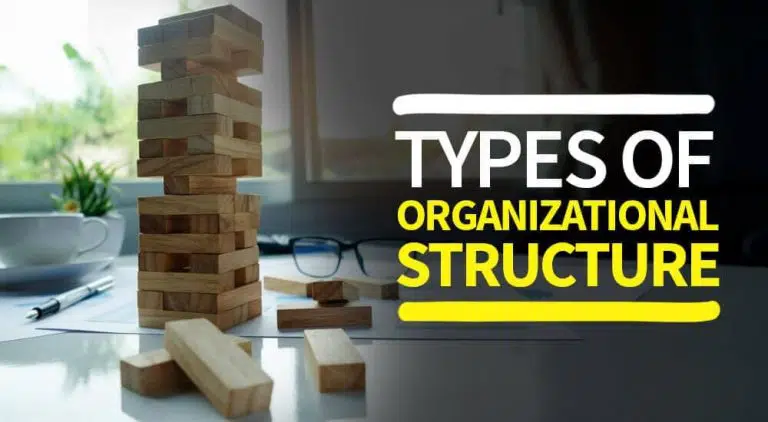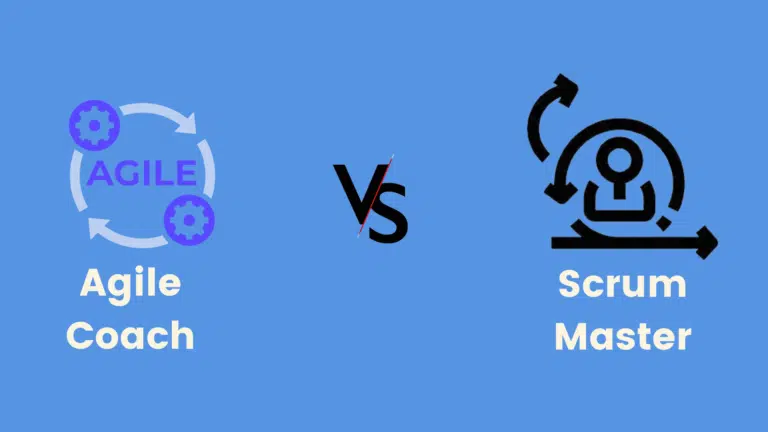Managing a project is difficult because the environment in which the project takes place is constantly changing, and it is impossible to predict the effects of any unplanned event that may take place.
A project can be broken down into five phases of project management, which can assist you in effectively initiating, planning, executing, and controlling the project after it has been completed.

Regardless of the project size, all projects pass through the five phases. The project’s life cycle is finished with these five phases of project management.
Let’s dive deeper.
Five Phases of Project Management
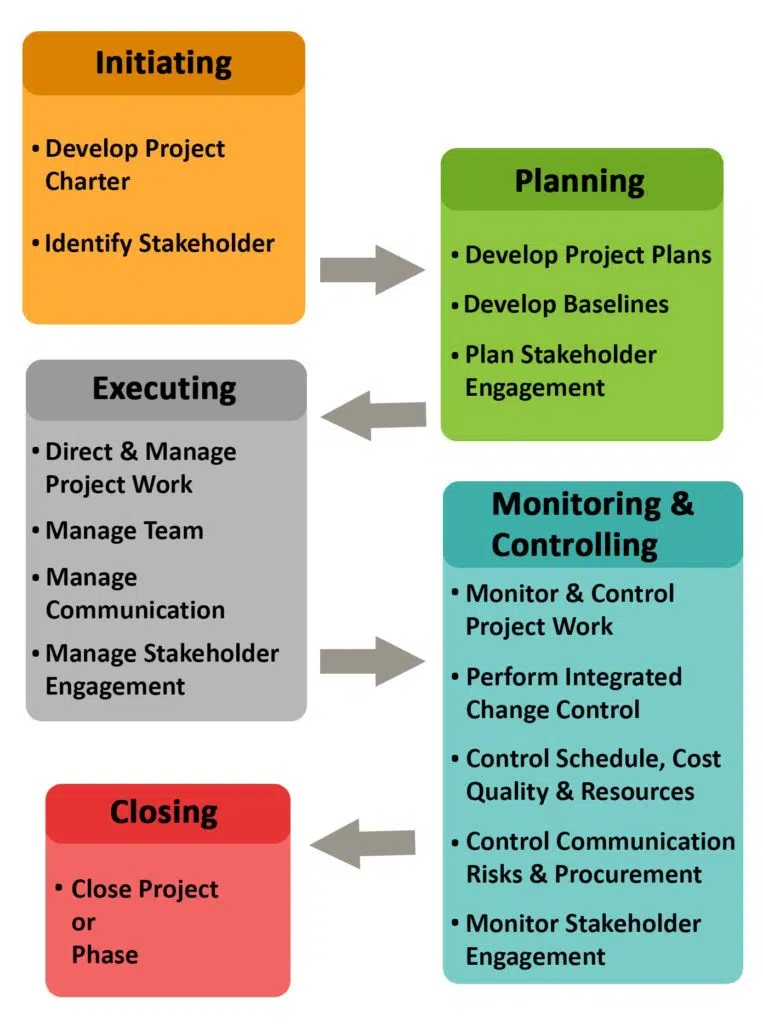
As per the Project Management Institute (PMI), the five phases of project management are as follows:
- Initiation
- Planning
- Execution
- Monitoring and Controlling
- Closure
These project phases are independent and happen in a sequence. A project can have multiple project management phases.
#1. Initiation Phase
Project initiation is the first phase. The project manager is selected during this stage, and the project charter is developed. The project manager receives the resources necessary to finish the project and the authority to do so as part of the project charter, which marks the project’s official beginning.
The feasibility study, cost-benefit analysis, and business case have all already been prepared thanks to the efforts of a project sponsor. The sponsor can develop the project charter with the assistance of these documents. They can ask for assistance in the creation of the project charter from the project manager.
The project manager’s job begins immediately following their appointment, and they can start with identifying project stakeholders.
As part of the preliminary stages of the project, many industry professionals recommend conducting a feasibility study.
Example
Take, for instance, the construction of a house as an example. You will select someone to serve as the project manager and give them the budget and the deadline. Now that the people who will live in the house have been identified, the project manager can begin collecting the requirements. This is a process for determining who the stakeholders are.
Questions to Ask During Project initiation
- Is the project feasible?
- What are the project objectives?
- What problem are we trying to solve?
- What outcome are we trying to achieve?
- How will the project’s success be measured?
- What are critical success factors?
- What are the Key Performance Indicators?
- Which stakeholders are involved?
Best Practices for this Phase
- Though project sponsors or top management develop the project charter, a project manager can help them develop it.
- While identifying stakeholders, ensure to involve all internal and external stakeholders so that all necessary inputs are received and increase the project’s likelihood of success.
- Don’t drill down too much into detail; just identify stakeholders and note them down in the stakeholder register.
- Ensure the project objectives are SMART (Specific, Measurable, Attainable, Realistic, Timely) and CLEAR (Collaborative, Limited, Emotional, Appreciable, and Refinable).
Deliverables
- Project charter or Project Initiation Document (PID) contains scope, objectives, participants, and success measuring criteria.
- Stakeholders register with a list of project stakeholders.
#2.Planning Phase
During the project’s planning phase, you will create an outline describing every aspect of the plan from start to finish. This plan will guide you through the subsequent phases of your project, which includes “execution,” “monitoring and controlling,” and “closure.”
In this phase, you will develop the work scope, establish project baselines, and create project management plans such as communication, risk, quality, and procurement, among others. During this phase, the project plans and most of the project documents are developed.
You create a comprehensive plan for the team members to follow to finish the project successfully. In this roadmap, you will determine how to achieve the project objectives. You will be responsible for defining the project milestones that are depicted graphically on a network diagram or a Gantt chart.
Example
In the same example of building a house, as part of planning, you will sit with your team to draw the plan, distribute the budget to tasks, assign tasks to team members, establish a timeline for moving forward, etc.
Questions to Ask During the Planning Phase
- What is the budget?
- What resources do we have to work with?
- What are the roles and responsibilities assigned to resources?
- What is the deadline?
- What risks are we taking?
- What are the milestones?
- What project management software should we use?
Best Practices for this Phase
- As per the stats, 50% of projects fail because of poor planning, so spend time developing a robust plan that helps you complete the project with minimal hurdles.
- As the project progresses, there can be changes that can modify the plans. To reduce the change requests later, involve all stakeholders at the planning stage and take their input.
- When creating work packages, ensure each is no longer than ten days so they can be executed, tracked, and completed easily.
Deliverables
- Project baselines
- Statement of scope
- Communication plan
- Risk management plan
- Gantt chart
- Milestone chart
- Work Breakdown Structure
#3. Execution Phase
The project execution stage is where your team does the actual work. This is the phase of the project that will take the longest, and it will also require the most funding. At the beginning of this stage, there will be a kick-off meeting in which the team will be briefed on the project. In your role as project manager, you are responsible for creating effective workflows and completing the necessary work to bring the project to a successful conclusion.
Example
In the same example of house construction, concrete is poured, walls are constructed, and windows are installed. All planning is put into action in this phase.
Questions to Ask During the Project Execution Phase
- What tracking system are we using?
- When is the kick-off meeting, and who’s coming?
- When will we have our recurring status meetings?
- What are we doing to avoid any risks?
- Have we developed a communication plan for all stakeholders?
Best Practices for This Phase
- Conduct a kick-off meeting with your project team to walk through the key elements of the project plan. This meeting is the first point to communicate your message, clarify questions, and set ground rules for your team.
- Thoroughly review the change requests, and make sure necessary adjustments are made after the change request is approved.
- Consider cloud-based project management software so team members can update the status of their tasks in real-time.
Deliverables
- Define team
- Assign resources
- Begin project management plan
- Set up a tracking system
- Execute task assignment
- Kick-off and status meeting
- Project schedule updating
- Refined project plan
#4. Monitoring and Controlling Phase
Performance and monitoring of the project guarantee that the project’s forward movement is in line with the project plan. In order to ascertain whether or not the project is proceeding as planned, project managers examine metrics and Key Performance Indicators (KPIs). This is done during the execution phase, during which various performance metrics, such as cost performance, schedule performance, quality performance, risk performance, and so on, are monitored.
Example
In the house construction example, while the workers are working on the construction, you will keep an eye on their performance and progress of the work, budget, and timeline and ensure that things are not off track.
Questions to Ask During the Performance and Monitoring Phase
- What is the quality of the project?
- Are we over budget or under budget?
- Are we on schedule?
- Are there any roadblocks?
- Are we still projected to meet the deadline?
Best Practices for this Phase
- Keep monitoring the risk register and watchlist for risks.
- Track project progress and identify bottlenecks before they impact schedule and costs.
- Conduct regular meetings to monitor progress and showcase progress to the stakeholders.
- Monitor the critical path for schedule deviation.
- If you need additional resources and time, communicate with relevant stakeholders quickly.
Deliverables
- Project performance reports are the key output of this phase.
#5. Closing Phase
The final project deliverables are either handed over to the client at this point or pushed live. This stage offers the chance to assess how successful the project was and reflect on the lessons learned throughout the process of getting to this point. Every document relating to the project and record of its lessons was filed away with the organizational process assets (knowledge repositories).
After completing these, the resources allocated to the project are released and given to another project. Most project managers hold an official closing meeting or throw an informal closing party to congratulate the team on their accomplishments and celebrate their triumphs. The completion of the project is signified by the closure phase.
Example
In the house construction example, at this stage, you are done with your construction and ready to move our furniture in.
Questions to Ask During the Closing Phase
- What went well?
- What did we learn?
- What can be improved next time?
- Are there any steps we can avoid?
Best Practices for this Phase
- Perform post-mortem analysis (retrospective) to learn from the completed project and improve in the future.
- All project documents must be stored in a common repository for easy audit and future references.
Deliverables
- Solution implemented
- User Acceptance sign off
- Project closure report, which contains
- Project name
- Goal
- Start date
- Deadline and actual delivery
- Projected budget and actual budget
- Team members
- Stakeholders
- Pain points
- Wins
- Observations
- Retrospective meeting
- Lessons Learned
- Updated knowledge artifacts
Do these steps need to be carried out in the order they are listed? Certainly not in every case. Take into consideration that a change that takes place in the middle of the project will alter the path that the project takes. As a result, rather than continuing on the project’s execution phase, you will go back to the planning phase to take into account the necessary adjustments.
In addition, you will revise the plans whenever there is a shift in the requirements or an expansion of the scope of the work.
Conclusion
Regardless of the size of the project, it is common practice for all projects to progress through all five phases. These phases help to manage the focus of the team, as well as the allocation of resources and align the entire life cycle of the project to be completed.

I am Mohammad Fahad Usmani, B.E. PMP, PMI-RMP. I have been blogging on project management topics since 2011. To date, thousands of professionals have passed the PMP exam using my resources.

